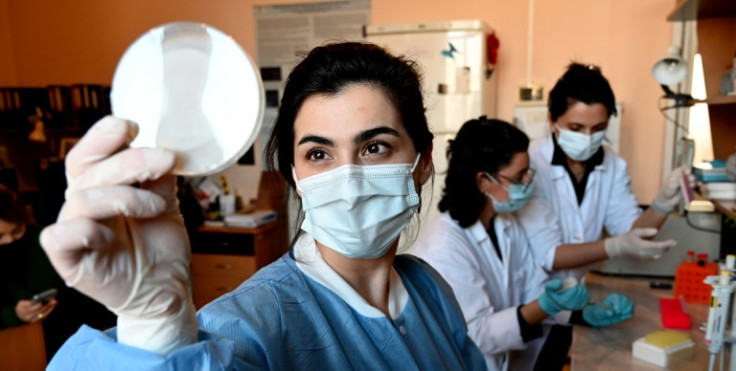Group of researches join forces to defeat a lethal brain tumour in children
Diffuse midline glioma (DMG) is one of the most lethal childhood brain cancers with a nearly 100 per cent rate of mortality within five years of diagnosis.

Virginia Tech researchers from the Fralin Biomedical Research Institute at VTC have formed a team with investigators from a Children's National Hospital to strategise treatment for deadly brain tumours using ultrahigh frequency sound waves.
An emerging technology called focused ultrasound is being utilised to fight diffuse midline glioma (DMG), one of the most lethal childhood brain cancers with a nearly 100 per cent rate of mortality within five years of diagnosis.
Led by Javad Nazarian, a principal investigator with Children's National Hospital, the group will delve into researching how to use focused ultrasound to create temporary gateways through the body's protective blood-brain barrier, in order to be able to deliver cancer medicine.
Nazarian is joined by Virginia Tech Cancer Research Alliance investigators Eli Vlaisavljevich and Jennifer Munson. Vlaisavljevich is a designer and developer of focused ultrasound technology while Munson creates 3D models to study brain tumours. Both bring expertise in focused ultrasound instrumentation and tissue engineering to the multi-institutional team.
The team is also backed up by Columbia University's Cheng-Chia Wu, the principal investigator for the world's first clinical trial using focused ultrasound in children with relapsed DMG. Wu's excellent knowledge in combining focused ultrasound with radiation and immunotherapy, for both paediatric and adult brain tumours, will be of great help to the already well-rounded team.
Nazarian stated his belief in his team by saying: "Bringing this expertise together will advance this promising platform for the treatment of paediatric brain tumours. Individually, we progress slowly or we may fail. Together, we will be able to better understand how to treat these tumours and accelerate their delivery to the clinic."
DMGs are primary central nervous system (CNS) tumours and usually begin in the brain or spinal cord. This dangerous rare sub-type of glial tumours can quickly spread to other areas of the CNS. "The tumour can invade nearby tissue and extend beyond what can be seen on MRI or by the surgeon during surgery," the National Cancer Institute warned. As of today, the cause of this lethal sickness is not known.
To find out more about these tumours, Munson's lab will develop 3D cell culture models that will include DMG tumour cells from patients of Children's National. The 3D tissue-engineered model of the tumour microenvironment can reveal why these tumours return, as well as which treatments will be most effective against them.
"Our goal is ultimately to develop a personalised medicine approach in which we can take a patient's tumour, build a model of that tumour in a dish, test drugs on it, and tell a clinician which therapy will work best to treat it," Munson stated.
Vlaisavljevich will design focused ultrasound instrumentation to work in cell cultures as well as living systems. His lab at VirginiaTech is currently exploring a technology called histotripsy. This could have the ability to destroy targeted tumours through the bubbles it will generate in the body's tissue.
"The problem is delivery — actually getting the drug to the target. That's difficult in the brain," Vlaisavljevich mentioned. He further added: "One of the promising benefits we've seen is focused ultrasound can be used in combination with microbubbles to open the blood-brain barrier and allow drug delivery into tumours that are normally hard to reach for any type of therapeutic approach."
The study will take place at Virginia Tech labs on the Blacksburg campus and at the Fralin Biomedical Research Institute in Roanoke, with ongoing research for the project underway at the Children's National Research & Innovation Campus in Washington, D.C.
Another sub-type of this "deadly killer" recently took another victim. Andy Rourke, the renowned British bassist and former bandmate of the beloved indie band "The Smiths", was defeated by pancreatic cancer at the age of 59 on May 19 of this year.
© Copyright IBTimes 2025. All rights reserved.






















